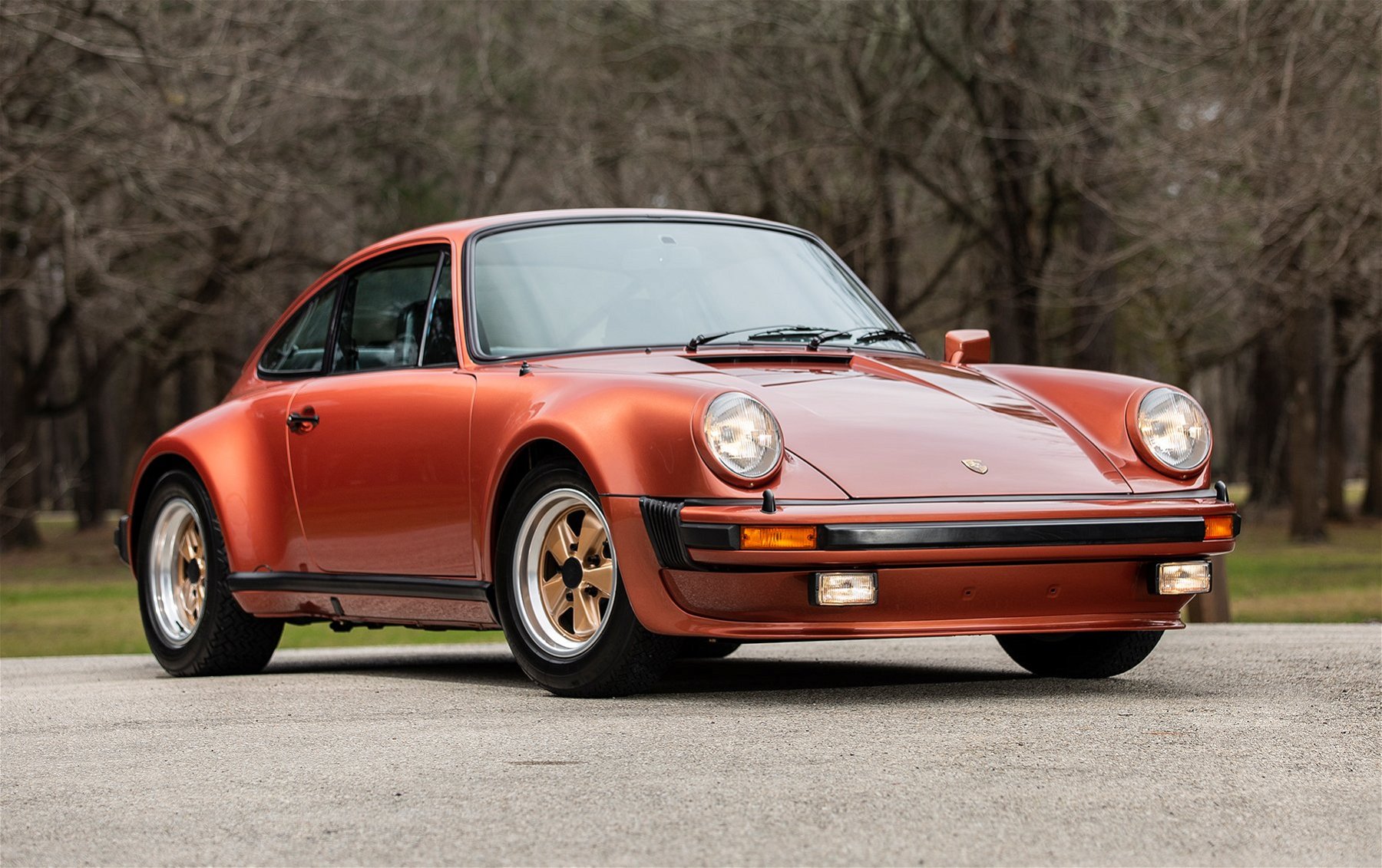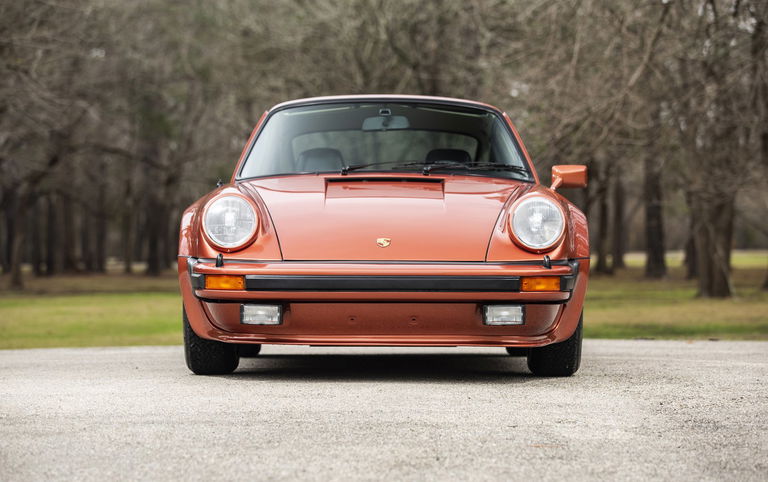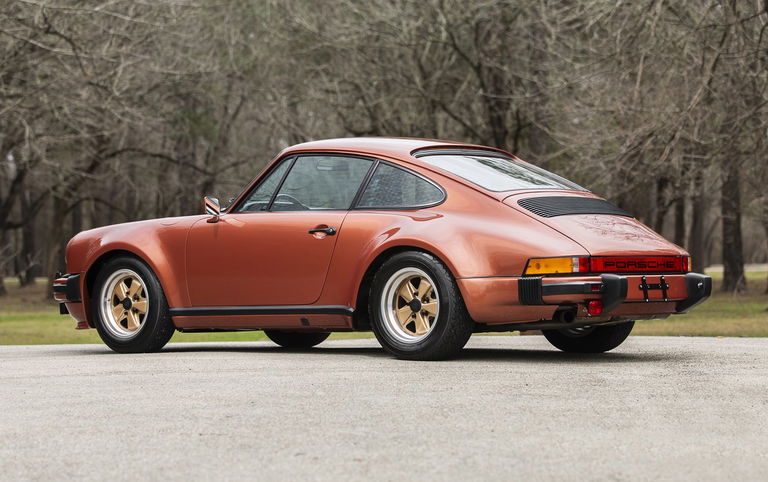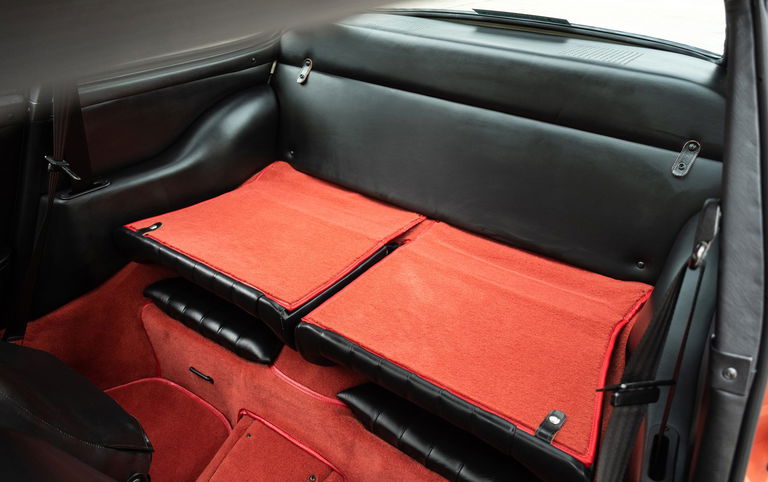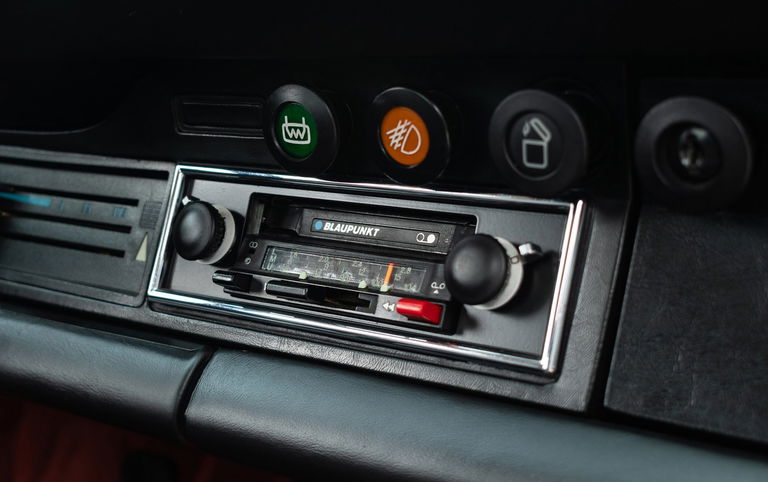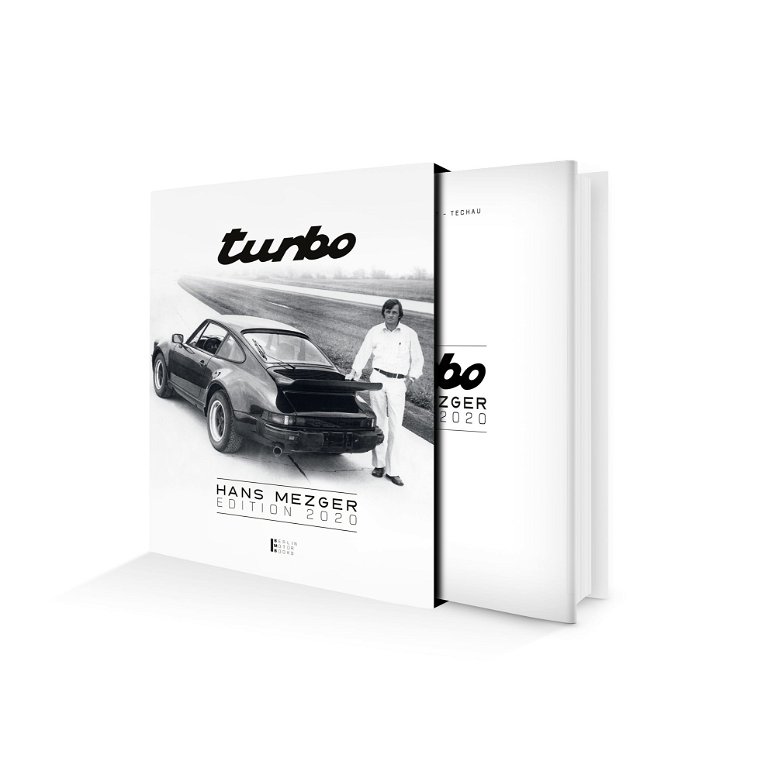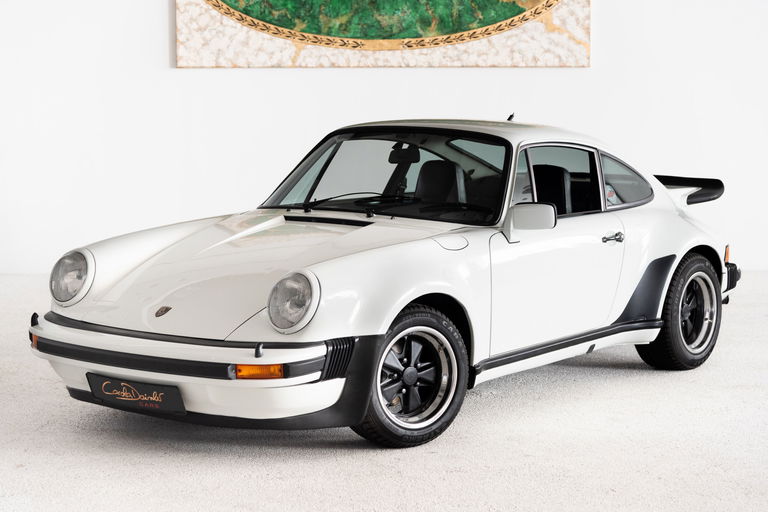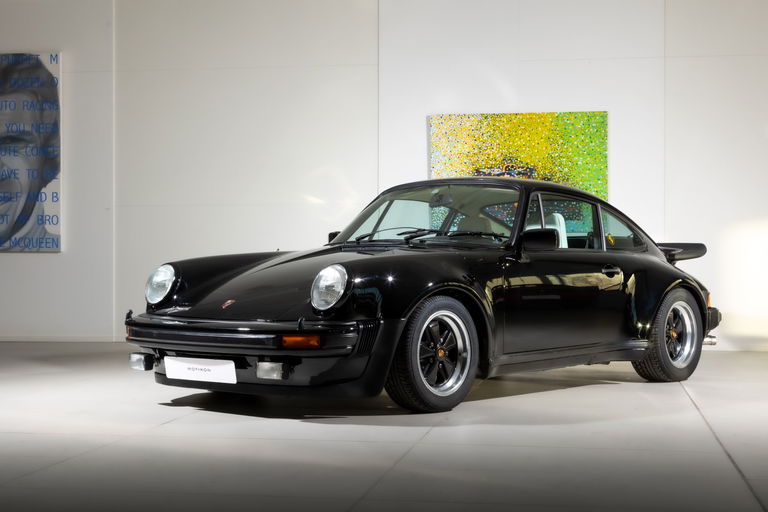Following its domination of the Can-Am racing series in 1972 and 1973, Porsche used its experience with turbocharging technology gained from motor sports for serial sports car production. Introduced at the 1974 Paris Motor Show, the Type 930 was distinguished by a 3.0-liter turbocharged flat-six engine, flared wheel arches, uprated suspension, and unmistakable “whale tail” rear spoiler. Revolutionary in performance, but demanding of its driver, few cars could compare to the 930’s benchmark performance figures of 0–60 mph in less than six seconds, and a top speed of 155 mph.
This Porsche 930 is the 162nd of 274 first-year 930 Turbos built for the 1975 model year. As recounted in the 000 magazine article “The Turbo with No Tail,” this 930 was special-ordered by first owner Juan Guinovart Paredes of Barcelona through Spain’s official Porsche importer, to appear like a standard 911 in an effort to circumvent punitive import taxes on performance cars.
Agreeing to the request, Porsche built this 930 without the rear wing, and created a one-off fiberglass front valance to balance the car’s aerodynamics. Finished in uncommon Salmon Metallic (code 036) over a black leather interior with copper red carpeting, additional features included sport seats, limited-slip differential, Fuchs wheels with gold centers, Blaupunkt Bamberg radio, no air-conditioning and model designation delete. According to the article, Ryan Snodgrass – the author of the definitive work on the subject, Turbo 3.0: Porsche’s First Turbocharged Supercar – believes this chassis to be the sole 930 built by the factory without a rear wing.
While interim history is not well known, this 930 was purchased into current ownership in 2014, and subsequently entrusted to Cam Ingram and his Pebble Beach Concours-winning Porsche restoration shop Road Scholars in Durham, North Carolina. During a documented four-year process to return this example to the same state as when it left the factory in April 1975, original Rest of World (ROW) 1975 930 models were studied in person to ensure authentic duplication of the construction methods Porsche would have used in the period. In addition to refinishing the 930 in its original Salmon Metallic hue, reupholstering the interior using correct materials, and rebuilding its matching-numbers drivetrain, the meticulous nature of Road Scholars’ work is illustrated by the sourcing of correct date-stamped replacement parts, performing specific mid-year factory overspray practices, and reconstructing factory inspection marks.
This 930 has never been publicly exhibited and is offered with books, tools, jack, spare, Porsche Certificate of Authenticity, and restoration documentation. Far rarer than the 3.3-liter version that followed, the original 1975–1977 Turbo model was an unfiltered driving experience when new, but remains potent even by today’s standards. The opportunity to own this historically significant and unique first-year 930 is quite likely unrepeatable.
